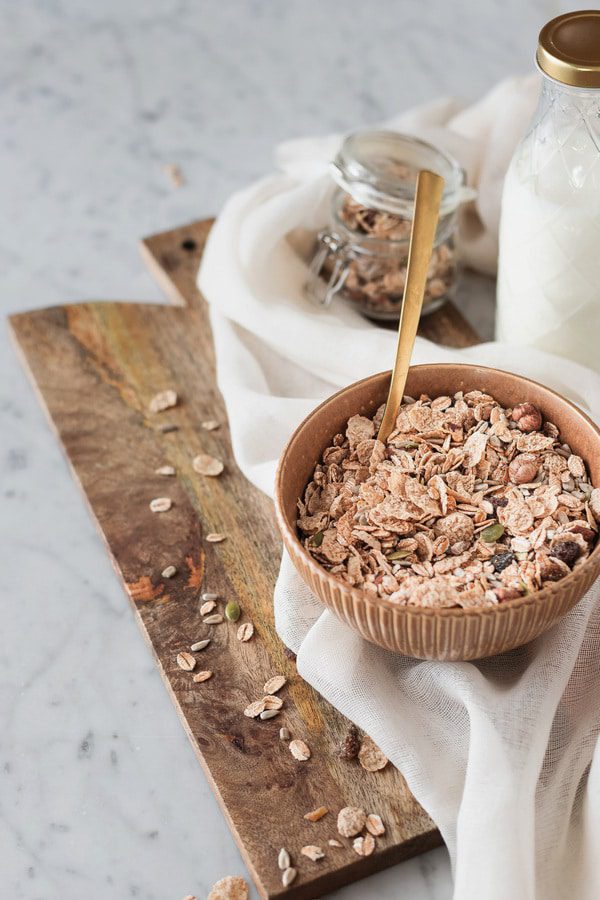
If you found out that there was a simple way to fight against the world’s leading cause of death simply by changing your diet, would you do it? Recent research indicates that people who eat more whole grains have a reduced risk of cardiovascular disease. Read on if you’d like to find out how such a small dietary change can lead to a better quality of life!
Am I at Risk for Cardiovascular Disease?
Cardiovascular disease is the leading cause of death globally. The term “cardiovascular disease” covers numerous medical issues that affect the heart and blood vessels, including coronary heart disease, congenital heart disease, irregular heart rhythm and heart attacks. While cardiovascular illnesses accounted for 32% of global deaths in 2019, it is equally important to note that lifestyle changes can prevent most of these issues!
We should also recognize that cardiovascular disease affects all groups of people, no matter their race. It’s a risk for almost half of Americans, with some statistics suggesting that 45% will have at least one heart disease-related issue in 2035. Nor does heart disease discriminate based on gender as it continues to be the leading cause of death for both men and women.
Aside from the whole grain question, which we’ll discuss shortly, there are five primary risk factors that we should look out for. High blood pressure and high cholesterol are the first two. Smoking, the third, is controllable and avoidable with healthy lifestyle decisions. Other dangers include obesity and physical inactivity. Finally, heart disease is also a greater concern for individuals with diabetes, but proper management of glucose levels can mitigate this risk.
How Should I Change My Diet?
Adding whole grains to your diet is a big way to fight against cardiovascular disease. To be more specific, the study from the Journal of Nutrition found that three servings of whole grains per day provided the maximum benefit. Individuals who ate that amount of whole grains saw healthier waist size, blood pressure and blood sugar. Why? Because whole grains contain fiber and heart-healthy nutrients, which are eliminated when grains are refined.
In the words of Dr. Caleigh Sawicki, who contributed to the Journal of Nutrition study, there are multiple elements of whole grains that contribute to our health. “The presence of dietary fiber in whole grains can have a satiating effect, and the magnesium, potassium, and antioxidants may contribute to lowering blood pressure. Soluble fiber, in particular, may have a beneficial effect on post-meal blood sugar spikes,” she says.
What can we do with this research? First, we have to know what whole grains to look for to plan grocery lists, so here’s a shortlist of grain products to choose from: whole-wheat flour, 100% whole-grain bread, high-fiber cereal, oatmeal, and whole-grain pasta. The least healthy grain products include white bread, biscuits, egg noodles, and buttered popcorn.
Another great way to improve your diet is to control your portion size. It sounds obvious at first, but in day-to-day life, it can be hard to remember that taking seconds, using large plates, or eating until you feel full are all ways to accidentally overeat. If you check serving sizes and use smaller plates, consuming the right amount of food will become very easy.
The last piece of nutrition advice we’ll leave you with that will also be beneficial in fighting cardiovascular disease is choosing low-fat protein sources! Knowing what types of protein to look for can make a world of difference to your physical health. The most beneficial options include eggs, fish, skinless poultry, and soy products. Items you should limit or avoid include sausage, bacon, breaded meats and full-fat milk.
A Parting Reminder
Many of these dietary and lifestyle changes will be difficult for some, but we all owe it to ourselves and our loved ones to take responsibility for our health. If you’re at risk for cardiovascular disease, take a moment to ask yourself, ‘How can I integrate healthy portions, more whole grains, and more healthy protein into my diet?’ Carefully planning out your grocery lists for each shopping trip and paying attention to your portions at each meal will make a huge difference when it comes to taking care of yourself properly.






0 Comments